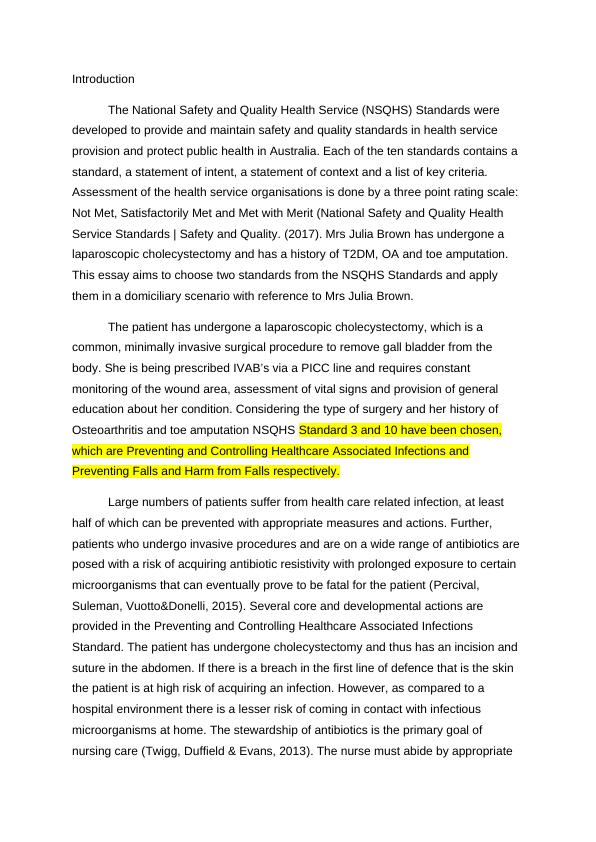Quality Health Service (NSQHS) - HNN120
5 Pages1170 Words69 Views
Deakin University
Added on 2020-03-04
About This Document
The National Safety and Quality Health Service (NSQHS) Standards were developed to provide and maintain Safety and Quality standards in health service provision and protect public health in Australia. Each of the ten standards contains a standard, a statement of intent, a statement of context, and a list of key criteria. This essay aims to choose two standards from the NSQHS Standards and apply them in a domiciliary scenario.
Quality Health Service (NSQHS) - HNN120
Deakin University
Added on 2020-03-04
ShareRelated Documents
End of preview
Want to access all the pages? Upload your documents or become a member.
Practise in the Domiciliary Health Care Environment
|5
|1179
|61
The National Safety and Quality Health Service
|5
|1137
|149
Professional Nursing Practice - PDF
|14
|3287
|35
NURS2006 - Chronic Illness and Nursing Care
|10
|2319
|160
Using Prophylactic Antibiotics for Reducing Risk of SSIs in Operation Theatres
|12
|4838
|65


